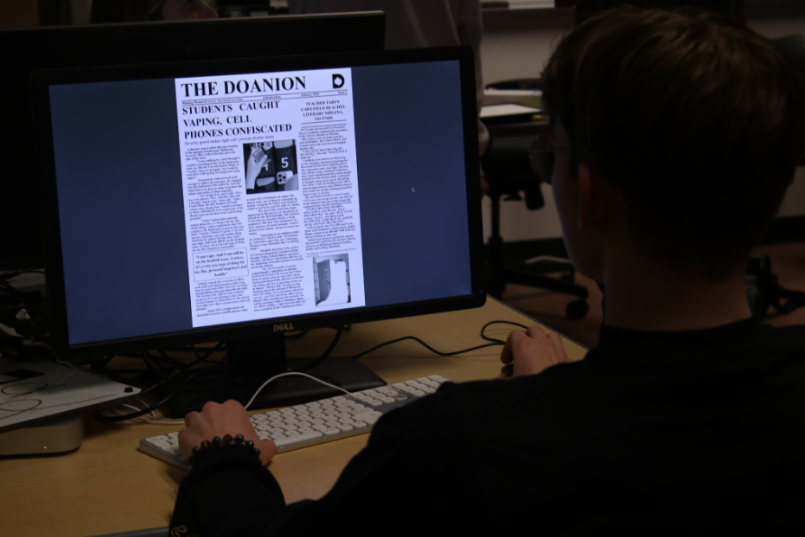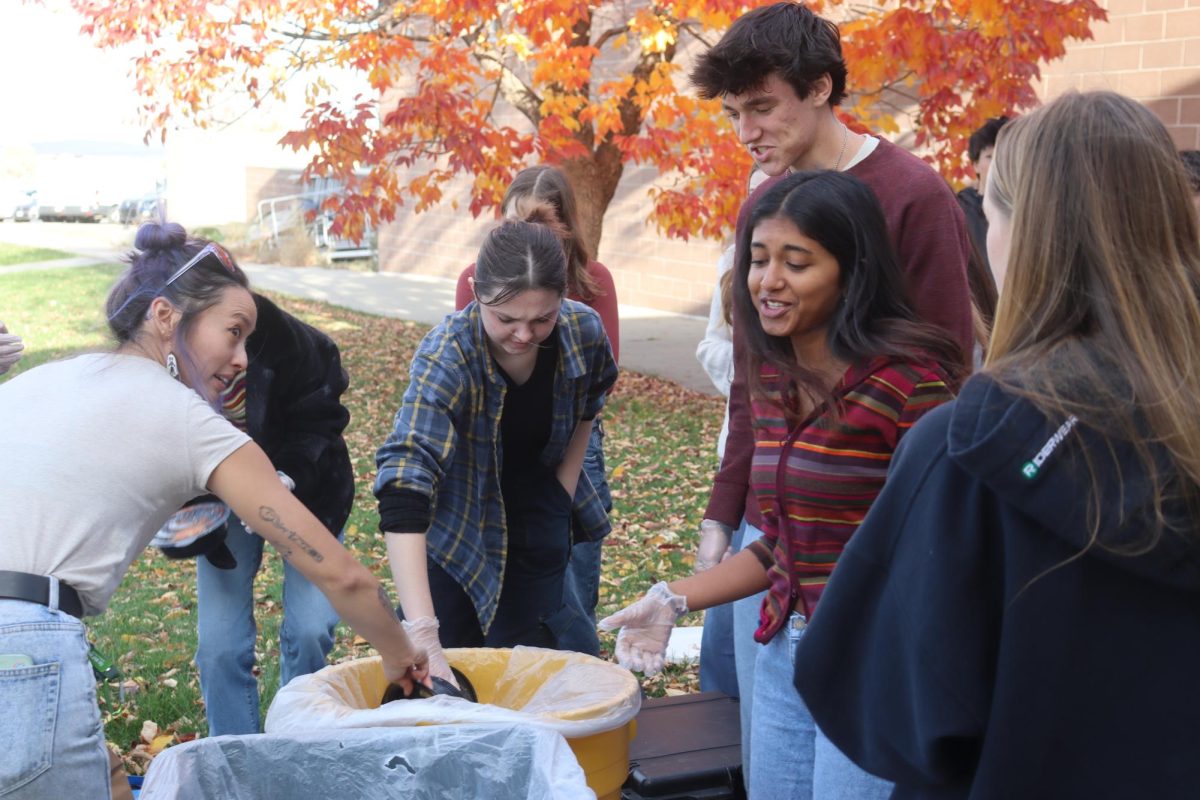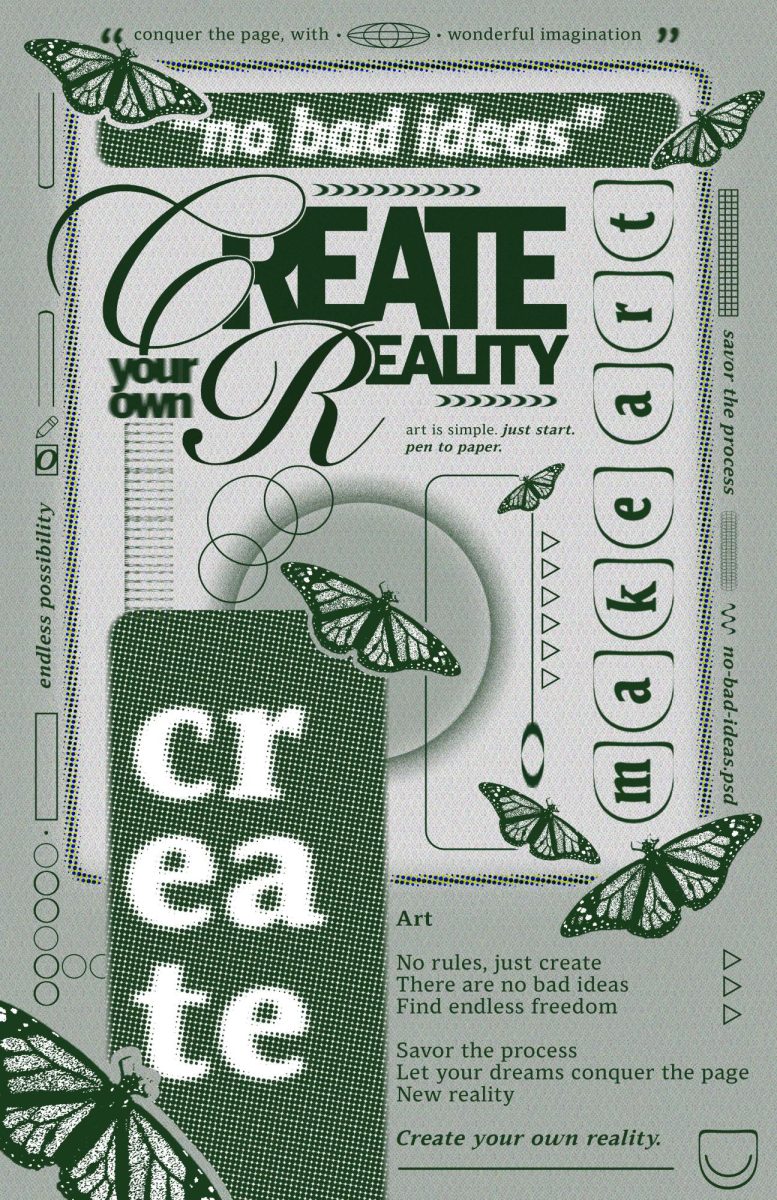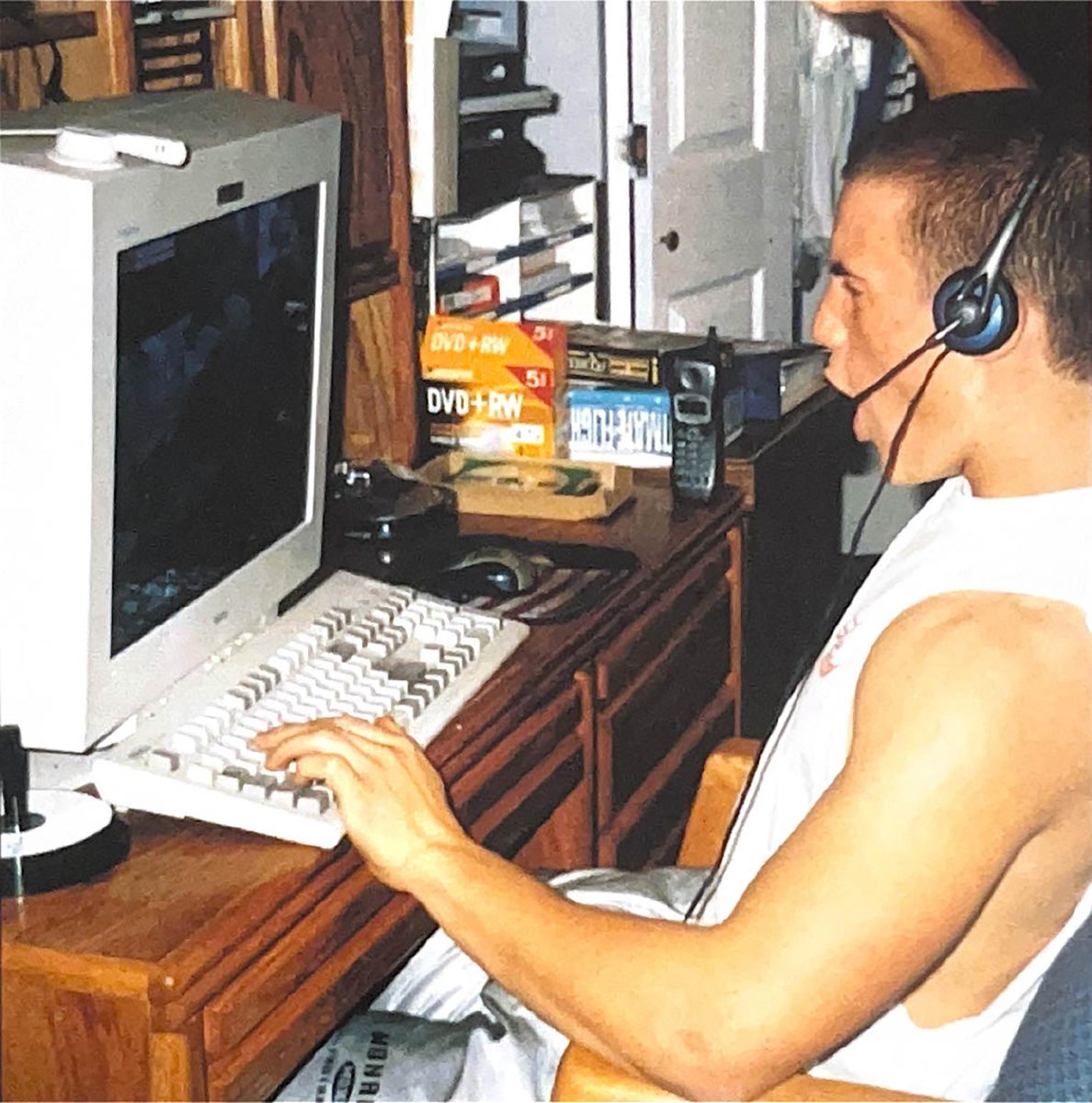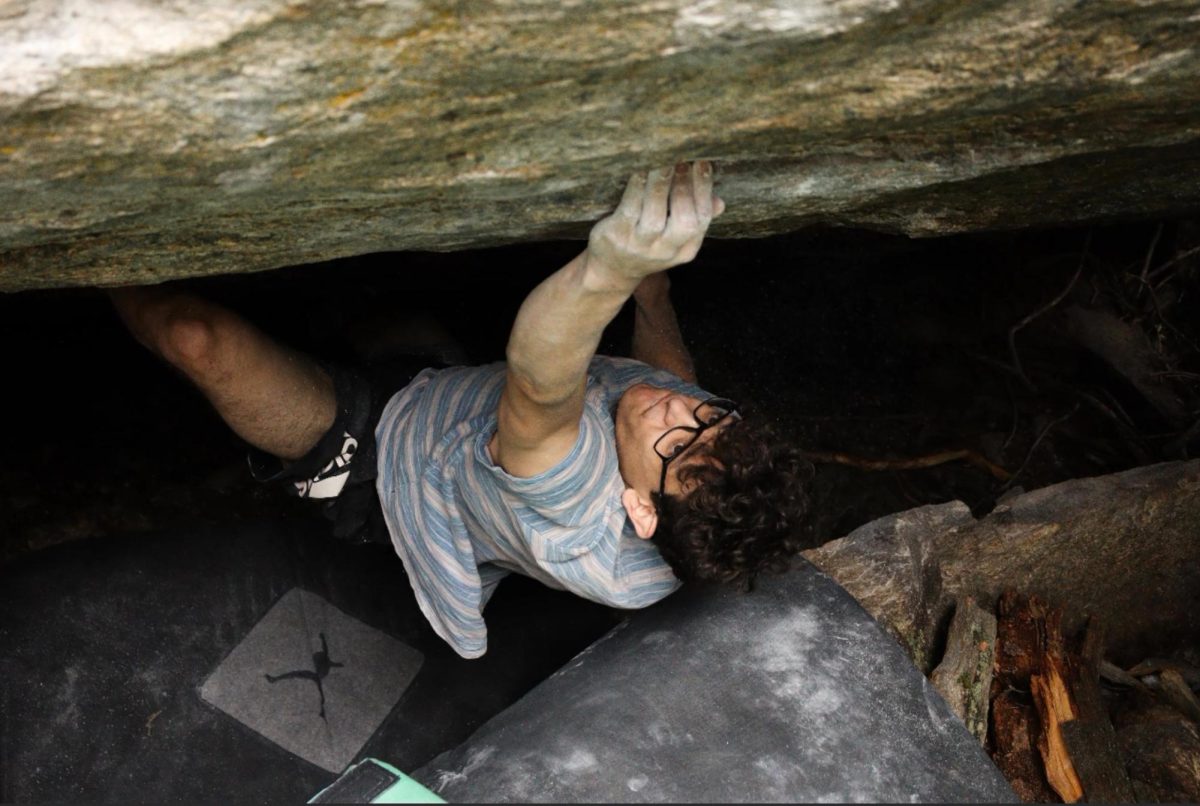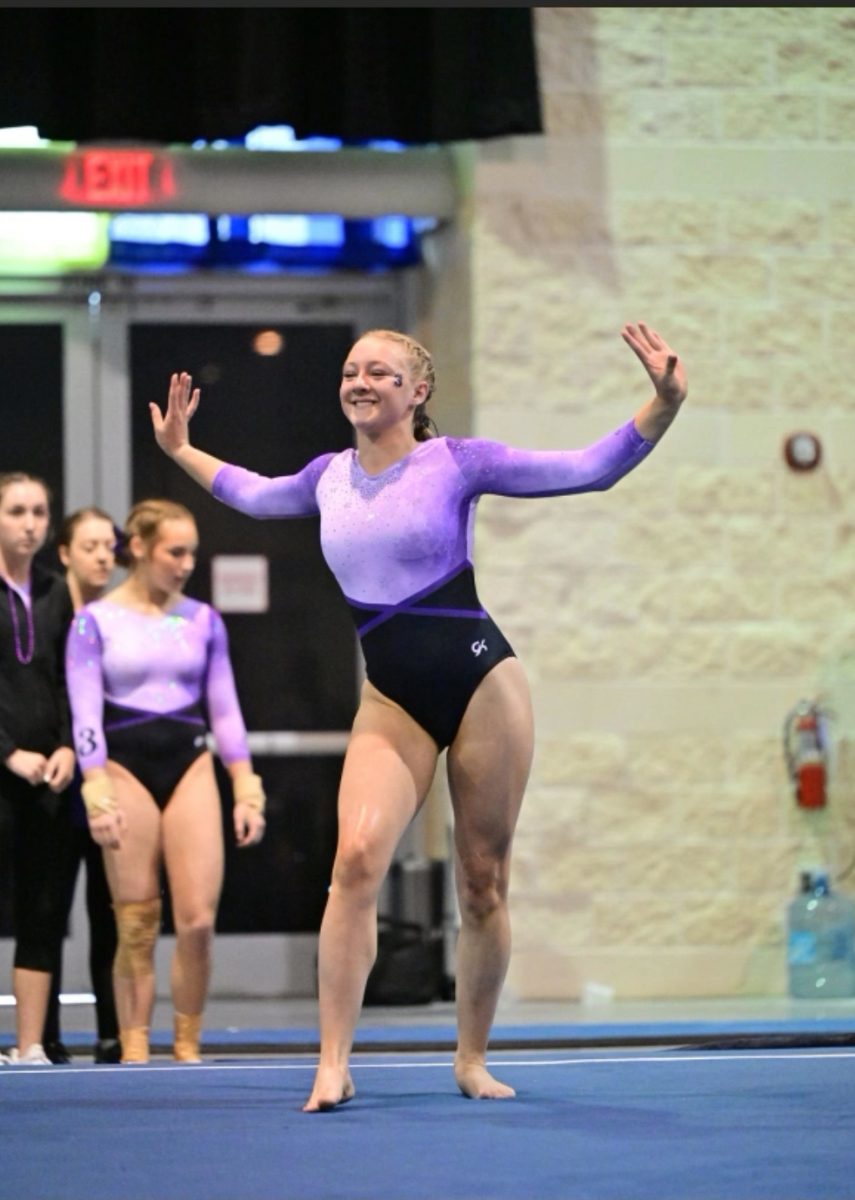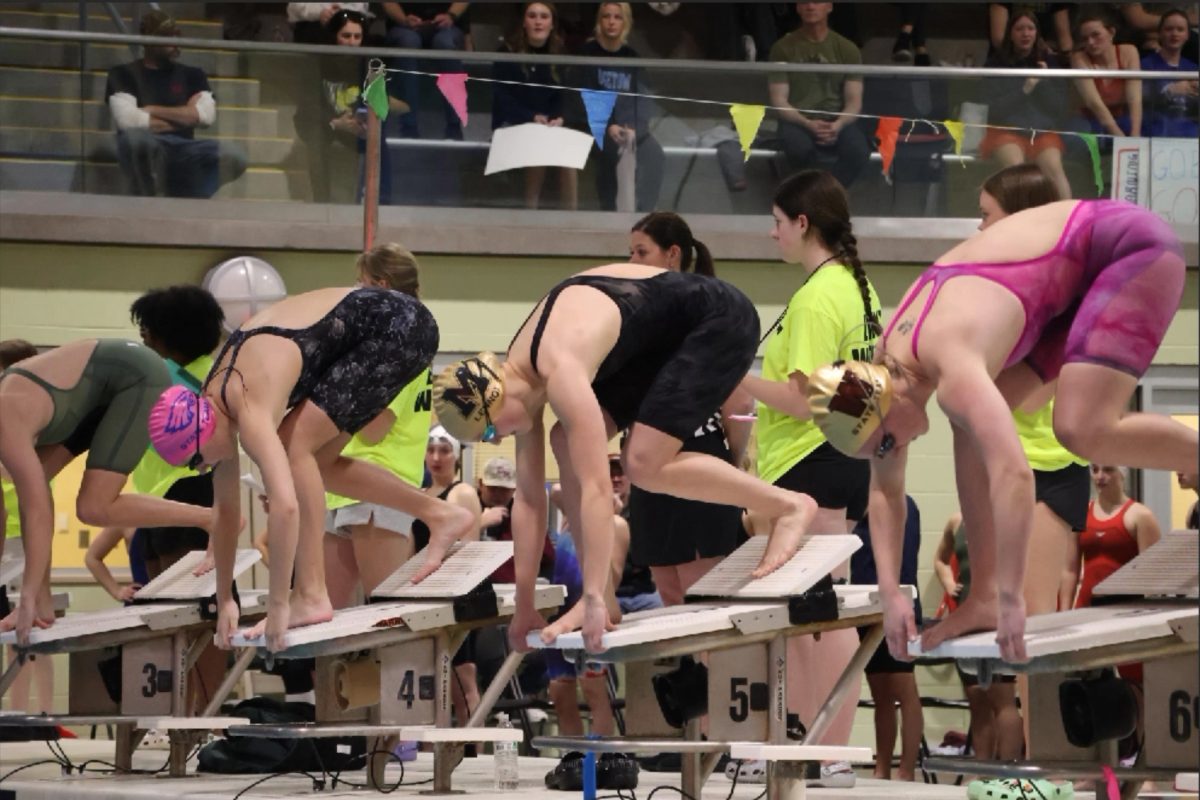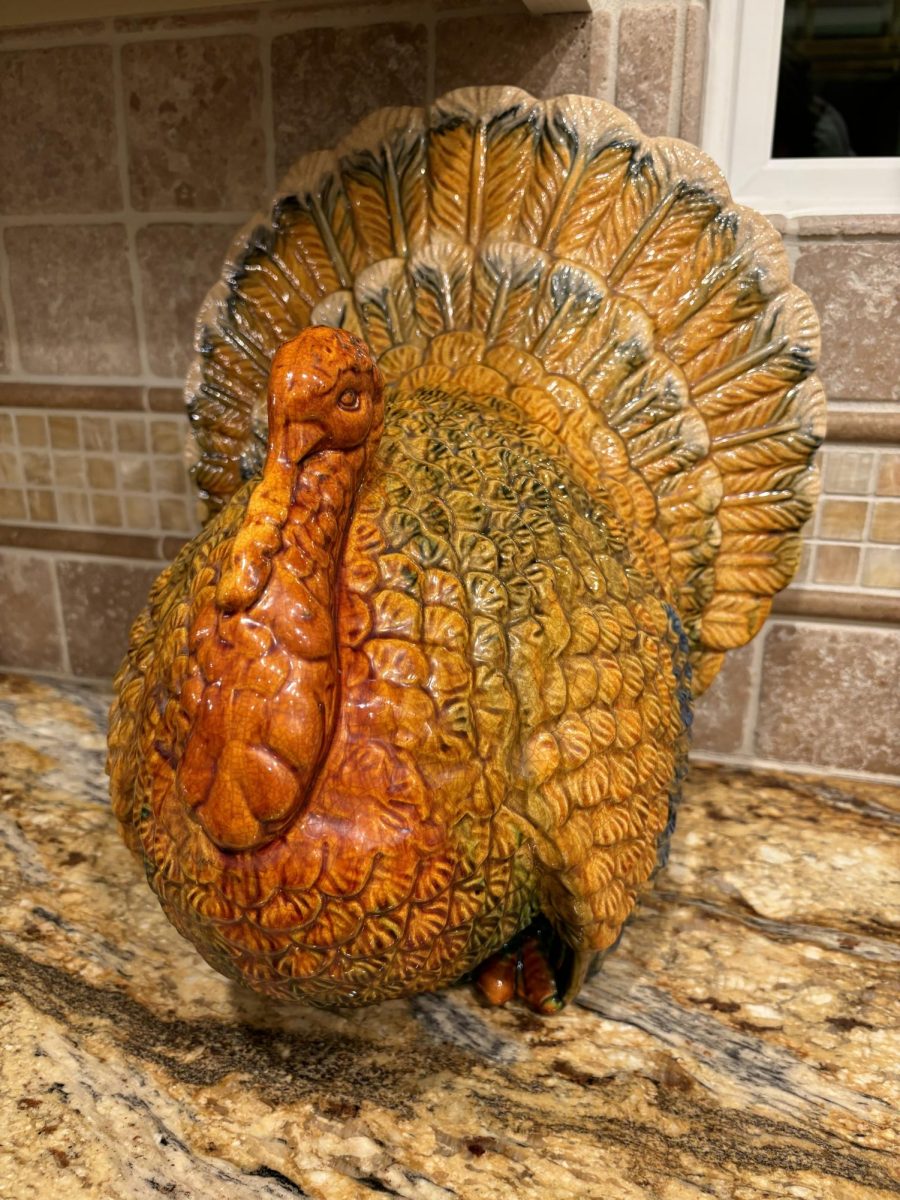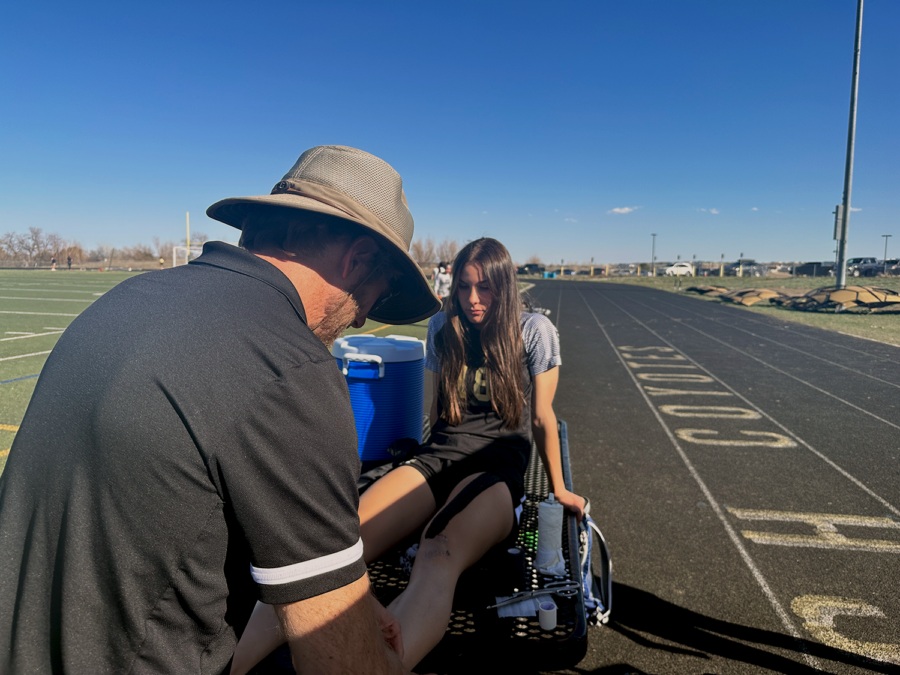Playing through the pain
Student athletes learn limits to manage physical health
Soccer player Emma Fassora ‘25 gets her ankle taped by the athletic trainer before a game. The tape helped keep her ankle supported for the match.
Every athlete has one worst nightmare: a season-ending injury. The sprain of an ankle. The break of an arm. The tear of an ACL.
According to P.E. teacher Alex Esposito, younger athletes are more prone to injuries as they tend to not know their limits or work on injury prevention.
“A lot of kids these days have knee problems and are predisposed to injuries,” he said. “They don’t do any injury prevention programs before they’re in season.”
Some coaches at Monarch hold indoor training in the off-seasons in order to keep their athletes in shape and help with injury prevention by strengthening vulnerable muscles.
“A lot of coaches here are doing a good job and have been getting athletes in the weight room before the season, but sometimes not,” Esposito said.
Esposito sees injuries like ACL tears and sprained ankles becoming more and more common among young athletes, players have to be more aware of their limits when competing in a sport.
“You have to be really in tune with your body and know what’s too much and what’s not,” he said.
For soccer player Avery Messman ‘23, knowing her limits is vital to her own athletic wellness.
“I’ve probably sprained my ankle seven times, and I get it taped up whenever I need it,” Messman said. “When I feel like I can’t go anymore, I can’t push anything. So, I take myself out of the game or practice.”
Grace Smith ‘23, another soccer player, also has outlets to prevent injuries and keep her physically healthy.
“I would meet with my club’s strength trainer once a week,” Smith said. “They would have me do different types of movements and exercises targeted towards the hip flexor I had injured.”
The girls’ soccer team uses their off-season to do winter workouts and strength training in the weight room to continue to keep players in shape before the spring season begins.
“Coach Katy Wood has us do these workouts and she always tells us we have to get past the crap and keep going,” Smith said. “We’ll be in the middle of a tough workout and I’ll be wanting to throw my guts up. But once you’re able to push past it, you feel this clarity.”
Mentality goes hand and hand with physical fitness and wellness. Athletes have to be mentally sharp to keep themselves from getting accidentally injured.
“Because I play midfield, it just comes down to running back and forth and eventually getting tired,” Smith said. “It’s exhausting to your legs and especially your mind when you feel like you can’t do it. I think it’s just the reality of sports. You feel like you’ve done everything you can and it’s still not enough.”
Playing through the pain isn’t necessarily something athletes should live by, but if they know their limits, they can try to push themselves to finish a game or a practice stronger.
“I have to realize I can actually flip it around and do it,” Smith said. “That realization is what really gets me through during games when I’m getting tired.”


